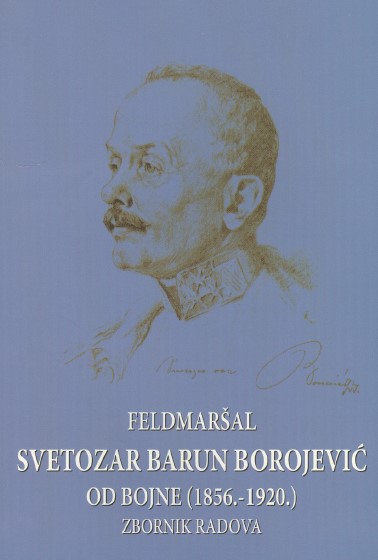USPOREDBA STUDIJA STJEPANA SARKOTIĆA I STUDIJA CONRADA VON HÖTZENDORFA O PRETPOSTAVLJENOM SUKOBU NA TALIJANSKOM BOJIŠTU SA STVARNIM DOGAĐAJIMA KOJI SU SE ZBILI OD 1915. DO 1917. GODINE
COMPARISON OF SARKOTIĆ’S AND CONRAD’S STUDIES (1912) OF THE PROJECTED BATTLE ON THE ITALIAN FRONT WITH ACTUAL EVENTS IN 1917-1918
Author(s): Dinko ČUTURA
Subject(s): Military history, Military policy, Pre-WW I & WW I (1900 -1919), Peace and Conflict Studies
Published by: Hrvatski institut za povijest
Keywords: Stjepan Sarkotić; Conrad von Hötzendorf; the Italian front;
Summary/Abstract: Sarkotić was a general staff-educated officer, and his views were purely military: taking into account the geographic features of the future theatre of war, the balance of forces, transit ties and the impact of weapons, he proposed the appropriate measures for both the offensive and defensive stance of his own forces. In this regard, his analysis of usable routes was more precise and consequential than that of Conrad, and the war proved him right! He agrees entirely with Conrad in seeing the Tyrolean Sharpshooters as the principal force to defend the borders, and in the formation of garrison troops. Sarkotić expressed better consideration of logistics than Conrad. Conrad exaggerated somewhat in his views of a general offensive, setting aside an entire corps for an assault over the Plöckenpass. Knowing that even the Germans did not manage to take this fortification in 1917, it is difficult to believe that Plöckenpass could have been used to oversee an entire corps in the decisive first phase. In this third study, Conrad did not even consider an Italian attack from the east, but this is precisely what happened in 1915! Conrad and Sarkotić had the same view of the offensive from Southern Tyrol, i.e. it had to proceed from Bassan. Conrad dedicated more attention to the task of the “Pustertal group” and wartime events bore this out. Both authors showed that they were under the thrall of the doctrines of the time: advancement in valleys is only possible if the high ground on both sides is secured in advance; if there are alpine passes, they will be used militarily. It was in fact the South Tyrol offensive and the Twelfth Battle which showed that more robust units could advance in combat even in very difficult mountainous terrain, while the real problem was artillery mobility and logistics! Both authors displayed a visionary understanding of new transport means that would enable the move away from the monopoly of rail as the main artery of supply lines. Sarkotić’s study has particular value for evoking the psyche of the Italian general staff. To be sure, it is incomplete—the author’s subconscious appreciation of the Plateau comes to the fore—but his calculations are entirely correct and his conclusions are logical. And they were confirmed by wartime operations in that region in 1915-1918.
Book: Feldmaršal Svetozar barun Borojević od Bojne (1856.-1920.) - Zbornik radova
- Page Range: 71-90
- Page Count: 20
- Publication Year: 2011
- Language: Croatian
- Content File-PDF

